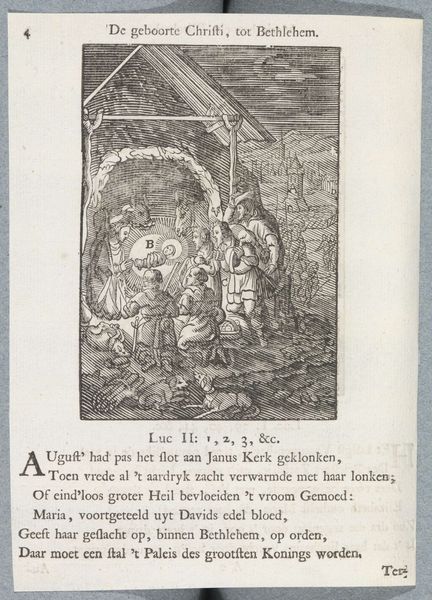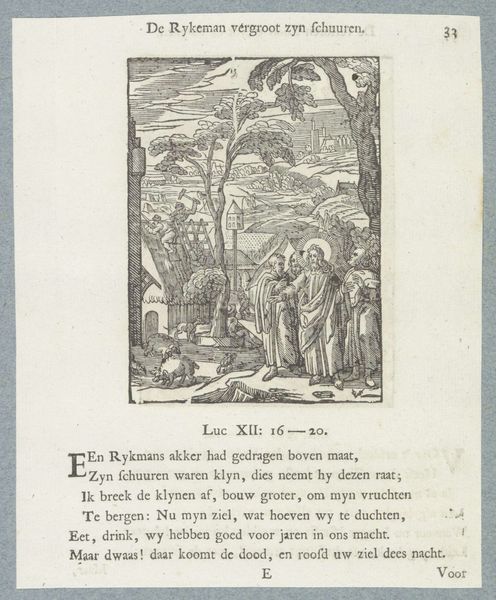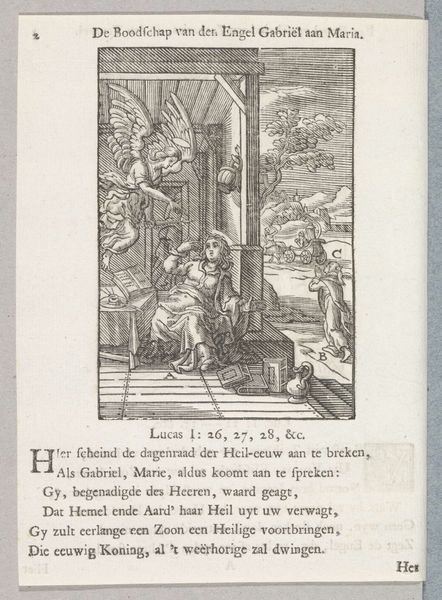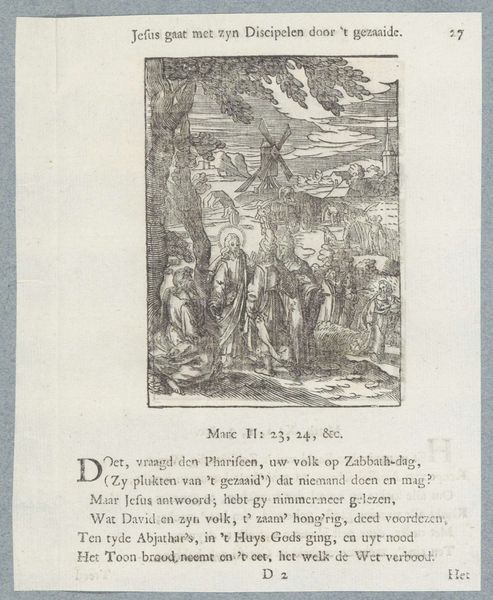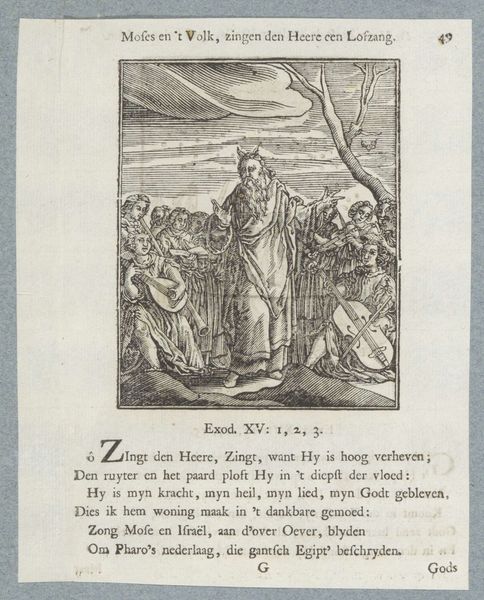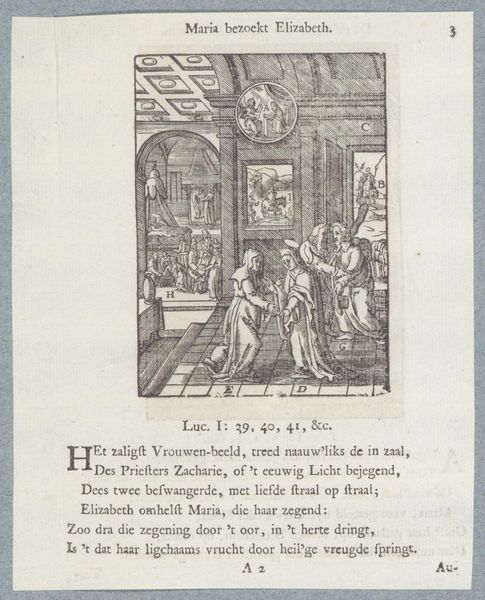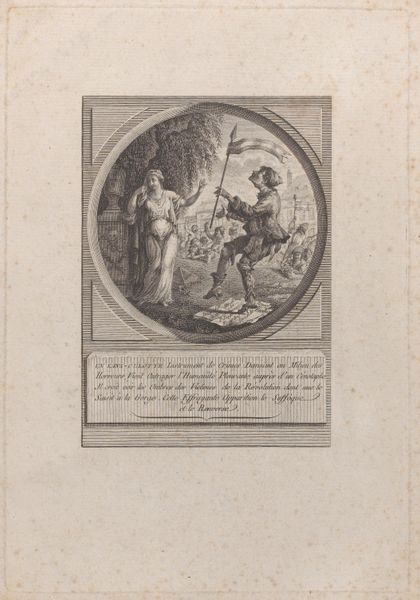
drawing, print, engraving
#
drawing
#
medieval
#
narrative-art
# print
#
figuration
#
line
#
northern-renaissance
#
engraving
Dimensions: height 110 mm, width 81 mm, height 168 mm, width 134 mm
Copyright: Rijks Museum: Open Domain
Curator: Christoffel van Sichem the Younger created this piece, "Prophecy of Zachariah," sometime between 1645 and 1740. It’s currently housed in the Rijksmuseum. Van Sichem employed engraving, creating a detailed print that belongs to the Northern Renaissance style. Editor: It hits me as strangely comforting. Even though it’s starkly black and white, and clearly depicting a stern lecture, there's a peacefulness in the gathering. The line work, while simple, gives it this naive, folk-art charm. Curator: Absolutely, that linear style and figuration tie it into wider narratives around religious art during the period. These engravings allowed for broader dissemination of biblical stories, influencing popular understandings of faith and morality. Zachariah is depicted admonishing the people of Israel to turn away from their sins. We should consider how it reinforces notions of sin, obedience, and divine authority. Editor: I am drawn to the central figure. Is that a mother holding a baby? Even amid this exhortation, this emphasis on repentance, you see tenderness. A human moment that gives a different reading. It becomes less about the fire and brimstone and more about, perhaps, reformation. Personal growth and change. Curator: Precisely! It is fascinating to unpack how gender and familial roles are visualized. Women, often positioned as embodiments of morality, are depicted as keepers of innocence, cradling the future. And this emphasis ties neatly to patriarchal structures within religious doctrine. Editor: It's also kind of funny—there’s a pair of discarded shoes in the front! I love these little touches of the everyday intruding upon the grand, spiritual pronouncements. It humanizes the whole thing. Maybe this means we really can show up as we are, shoes kicked off, imperfections and all, ready to listen and hopefully, learn. Curator: Yes, exactly! We must remember how the quotidian is inserted in the narrative—giving a new dimension to it. What it means to "hear" the prophet in the humdrum reality. Van Sichem’s work speaks volumes not only about religious history, but its entanglement with the stuff of everyday existence. Editor: I think looking at this simple scene offers a hopeful reminder. Maybe we can seek change and better versions of ourselves within community and even within ordinary circumstances. It's less daunting that way, wouldn't you agree?
Comments
No comments
Be the first to comment and join the conversation on the ultimate creative platform.
